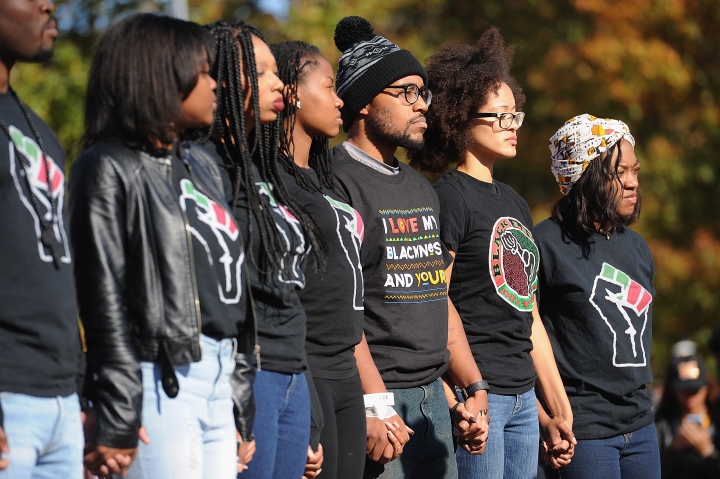There’s seems to be something about professional football that gets people all riled up (something in the turf, maybe?) If you haven’t read about my first encounter with ignorance at an NFL game, read this first. Or if you haven’t read my piece on the silent protests taking place at professional sports games, read this one, too.
Yet again, my significant other and I ran into some trouble when visiting Baltimore to watch the Steelers play their rival team. After a festive bout of tailgating, we arrived at our seats with a couple minutes till kickoff. The stadium was packed (with mostly Ravens fans) but we got settled pretty quickly by the time the national anthem started to play. In hypnotic fashion, (nearly) everyone in the stadium stood to hear the rendition belted out as we remained silently seated. To our right, a rather disgruntled woman leered in our direction. “Oh my god, are you kidding me?” was audible enough for us to hear, coupled with her look of absolute disgust at our silent act of protest.
Because I was fairly certain she wasn’t just mad about us supporting the opposing team, my partner and I talked to each other about her assumptions and reaction. She initiated a conversation with my partner: “My family is full of veterans who fought to protect this country.” Little did she know (at least at first) that we both are closely related to veterans who fought in combat for the U.S only to return to face either racial discrimination or neglect from the VA. But alas, she wasn’t here to listen. She was here to feel important.
As my partner continued to advocate on our behalf for our RIGHTS AS AMERICAN CITIZENS to express ourselves freely, our disgruntled patriot friend, with her husband’s hand blocking her face so he could watch the game, started to shout profanity at us. Visibly upset by our encounter, the woman left with her husband (whom I feel some sympathy for; he missed nearly the entire game). We didn’t see the woman for the rest of the game. It was too painful for her to sit next to disrespectful, unappreciative, “assholes” who clearly have no reverence for democracy.
But that’s the thing, isn’t it? People who serve in the military understand that their brave and selfless actions serve a larger purpose of freedom. You don’t become a soldier because you want people to think the same way you do; you serve in spite of those differences. You serve in the name of freedom and a democratic society where citizens have the right to express themselves, well freely.
So, angry Ravens fan, I appreciate the people who serve in the military and I value their efforts to protect my rights as a citizen. Thus, as a way to show that appreciation for what they do, I will continue to express my opinion in a way that may make you uncomfortable. My sitting for this anthem (created during a time when I would have been considered less than human) is not an attack on veterans or soldiers. It’s an attack on the institutionalized racism ingrained in our “free” society that shoots down black bodies and fuels the school to prison pipeline. The racism you might not notice as a white American thanks to your disillusioned perspective courtesy of Fox News.
I’m sorry, not sorry, that your world view can’t allow you to see the injustices marginalized people face on a daily basis (especially in a city like Baltimore.) But your insults and anger won’t deter me from continuing to exercise my rights.









